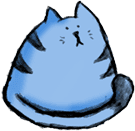
The Apple iPod is one of the most popular designed objects today, a piece of technology that no music fan can do without. Although it is just an Mp3 Player, something that there are many different types, brands and designs of, the iPod is the most popular, and successful, of them all. This is because Mp3 Players before the iPod were all too big in physical size or maybe even too complicated for everybody to use. When it was released in 2001, Apple aimed to keep the iPod simple, with a minimalistic user interface and by keeping it quite small in size. These aspects are what helped launch the iPod to popularity, making it now the market leader in digital audio players. However, it's not just practicality and functionality that have made it so successful, the actual design of the iPod has become iconic, a stylish and 'cool' accessory for the current generation.
The iPod shown in the picture above is my own, a 3rd generation iPod Nano. There is
 actually a now a newer version of this, the 4th generation Nano, as shown to the right. Personally, I am not the kind of person who will rush out and buy the new version of something, just because the old one is now outdated. However, there clearly are people who do this or Apple would not release a new design for their iPods each year. I even knew someone at Uni last year who purposely tried to break their current iPod so they could claim off their insurance to get the new updated version. There are never really any dramatic changes to the actual hardware of the iPod, and only a few new features are added to the software and UI, so essentially it is still just an Mp3 Player like any other. This leads me to believe that people who are willing to pay money for the new model, especially when they already have one of the previous ones, are only doing it to impress others or look 'cool'.
actually a now a newer version of this, the 4th generation Nano, as shown to the right. Personally, I am not the kind of person who will rush out and buy the new version of something, just because the old one is now outdated. However, there clearly are people who do this or Apple would not release a new design for their iPods each year. I even knew someone at Uni last year who purposely tried to break their current iPod so they could claim off their insurance to get the new updated version. There are never really any dramatic changes to the actual hardware of the iPod, and only a few new features are added to the software and UI, so essentially it is still just an Mp3 Player like any other. This leads me to believe that people who are willing to pay money for the new model, especially when they already have one of the previous ones, are only doing it to impress others or look 'cool'. 


